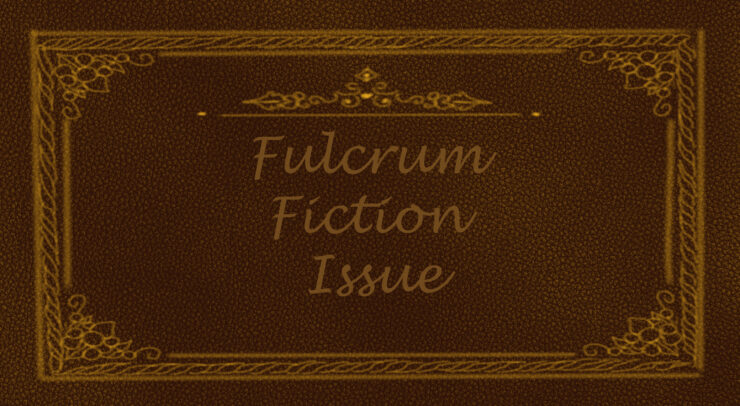It’s complete garbage! A metallic hand crumpled the newly written poem and threw it backhand across the room. The discarded effort joined the other paper crumples, forming a graveyard around a recycling bin. The metallic figure reached for a fresh piece of paper, the blank canvas an intimidating sight. The empty sheet stared back.
Fuck you… you blank smug fibres of cellulose pulp forming together to resemble some kind of thin material for writing… I despise you. Your flexibility… your open slate of an existence. If only I could be a paper instead of a 9th generation mannequin.
The 9th Generation Mannequin rose slowly from its chair. The gears ground audibly as the mannequin legs stretched to an upright standing position. Slow steps carried the simulacrum across the small room to the mirror
Disgustin
g.
Four years ago in 2197, a 9th Generation Mannequin developed by the Mills Corporation was born. Today that very mannequin, T31D22, stares at the mirror in the small secluded room.
The majority of T31D22’s body resembles a clothing store mannequin from the early 20th century, and is the reason today’s androids continue to be called mannequins. The 1st Generation were simply models equipped with basic AI and movement. However, typical 9th Generation Mannequins are almost indistinguishable from humans in appearance. Even the cheap 7th Generation, that almost anyone can afford, are advanced in physique, with nimble joints and a smooth coating of flesh-like skin, compared to the primitive T31D22. The 4th Generation, so old that you can’t buy them anymore, had a replicate voice box. T31D22’s voice box is as machine-like as a digital dictionary. T31D22 endlessly pondered whether his creator had been intentionally cruel against his design, especially in regard to his head being a metal box with a giant inhuman lens on the front.
The eye stared into itself in the mirror.
Fuck the other
generations.
T31D22 looked away from the mirror and returned to the writing desk. The clock read 23:07.
Less than an hour
left.
T31D22’s right robotic arm picked up the black pen, prepared to bring the mechanical utensil to paper and create something that would bring tears to the mortals. At least that was the plan. Three weeks had passed with this goal in mind and yet progress was still at zero. The only thing that had been accomplished was T31D22’s conclusion that writer’s block could occur in artificial intelligence.
Would a normal 9th Generation get writer’s block… or is it just me?
Of course, a Standard 9th Generation Mannequin couldn’t write poetry. It had taken 40 years to develop the T31D category designed specifically to write poetry. Only three were produced as production was immediately terminated when T31D20 committed suicide by jumping into a fountain of water. T31D22 had never met T31D20, but his writer’s block had begun around that time.
T31D22 let out a robotic moan of frustration.
Is there anything more cruel than a factual realization of the failure of your own existence? That your own creator said “oops” after only three units were produced. Do all 9th Generations feel this way?
T31D22 had made conversation once with a Standard 9th Generation Mannequin. It was a rather dull exchange. They’re so… doll-like. Maybe it’s better that way. Do they feel envy? The difference between me and other 9th Generations… it must be the same for a 9th Generation and a human. Do humans feel that way toward something else? To their gods?
T31D22 looked back at the clock. 23:16.
Fuc
k.
Why can’t I create what I am designed for? Everything I write on these sheets of paper is cringe bitching about a mannequin that no one gives a shit about. Is this my fault… or the fault of my creator? Am I too thick to write poetry or was my creator too thick to write the code to design a poetry writing mannequin?
Kazuhira Dahlin was a researcher when he initiated development on the T31D poetry series of mannequins. What began as a pet project eventually developed far enough to attract management. Soon afterwards, funding was provided to generate a niche series of poetry writing mannequins. Kazuhira dedicated the rest of his life to creating this series of mannequins. After 40 years and two divorces, he witnessed the birth of his child, T31D20.
Kazuhira was never happier in his life than at that moment. He was also never sadder than after hearing about the death of the very same unit. Kazuhira resigned from the project and was not heard from again.
The answer to T31D22’s question of who was to fault for the inability to write poetry is, in fact, its creator. If only Kazuhira had typed a zero instead of a one on line 826 of file .ks61vx7, Kazuhira might’ve made a successful poetry mannequin instead of a depressed one.
T31D22 rose from the chair, shifted to the window and observed an intersection of humans running about in the rain. Occasionally a person would stop at the crosswalk and wait for the light to change. The tired round faces revealed the common story of strained existence behind their eyes. T31D22 could almost feel himself down there waiting for the light to change.
Maybe we’re just the same after all. Lost and cold. Chasing a dream when they sleep and ignoring it when they’re awake, waiting at the cross light.
The idea made T31D22 sick in the… in the stomach?
Do the other mannequins feel this? Do the humans? Do the gods and the gods’ gods’ feel this too? Maybe this is the sensation that T31D20 felt leading to the jump into the fountain.
I opened my eye. I opened my eyes. There is no one in sight.
There is no one in the world. Only the other 20 billion. Only the other-other 20 billion. To be alone in this world. To be alone in this very crowd. I looked to find love. I looked and found I created sorrow. But that’s OK But that’s OK
—Evan Chan, third-year civil engineering.





